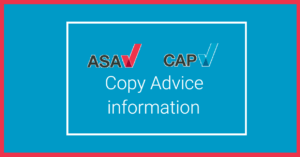Dark Patterns in Advertising: Are You Being Misled?
Dark Patterns, also known as deceptive design tactics, manipulate consumer behavior in online spaces. These practices include misleading choice structures, where layouts trick users into unwanted subscriptions, choice pressure, such as false urgency created by countdown timers, and choice information, where inflated price comparisons mislead consumers about savings. ASA rulings have flagged such tactics as potentially misleading under the CAP Code, emphasizing the need for transparency in advertising. Non-compliance can harm brand trust and result in penalties. To help businesses stay compliant, the ASA’s Copy Advice team offers free, confidential guidance on ensuring fair and ethical advertising.

Dark Patterns in Advertising: Are You Being Misled?
Dark Patterns, also known as ‘Online Choice Architecture’ or ‘Deceptive Design Patterns,’ are design strategies used to manipulate consumer behavior in online spaces. While persuasion is a natural part of marketing, certain practices may exploit cognitive biases, causing confusion or coercing consumers into unintended decisions.
Many such practices fall under regulations in the CAP Code, and while not all are inherently misleading, advertisers must ensure transparency to maintain consumer trust. Deceptive design tactics can lead to confusion, unintentional purchases, or unfair decision-making. The ASA closely monitors these practices and takes action against misleading advertising that exploits cognitive biases. Advertisers must clearly disclose promotional terms, avoid ambiguous language, and present options in a way that allows consumers to make informed choices. Failure to comply with these standards can result in penalties, reputational damage, and loss of consumer confidence. Below are key areas where the ASA has ruled against certain practices.
Choice Structure – Designing and Presenting Options
Some online advertisements have been found misleading due to unclear presentation of choices. For example:
- A third-party shopper rewards program failed to disclose upfront that an offer was part of a paid subscription. The design implied a cashback reward was based on a customer’s purchase, though it was actually a standard sign-up bonus.
- A major online retailer presented a checkout screen where the “Order Now with Prime” button matched the previous page’s “Continue” button, making it seem like the natural next step. Meanwhile, the option to proceed without subscribing was less visible, resembling links to privacy policies or terms.
Choice Pressure – Influencing Consumer Decisions
Certain tactics create urgency or scarcity to push consumers into making quick decisions:
- ‘Countdown Clocks’ indicate limited-time offers but should not be used deceptively—advertisers cannot continue discounts after the timer expires without a price change.
- Scarcity messaging, such as “Last purchased 1 minute ago” or “291 LEFT,” must be truthful and backed by verifiable data.
Choice Information – Framing Prices and Promotions
Price comparisons can make current deals appear more attractive, influencing consumer purchasing decisions. However, previous or future prices must not be artificially inflated to create a false perception of savings. Advertisers must ensure that any discounts or promotional prices are based on genuine reductions and reflect a realistic market value.
Misleading pricing strategies, such as referencing exaggerated original prices or short-lived discounts that never truly expire, can result in regulatory action. Transparency is key, and advertisers should maintain clear documentation proving that price claims are accurate and verifiable. Ensuring honesty in advertising helps build consumer trust and brand credibility.
For personalized guidance on non-broadcast advertising compliance, advertisers can consult the ASA’s Copy Advice team for confidential assistance. This service provides expert insights to help businesses ensure their ads adhere to the CAP Code and do not mislead consumers. Whether it’s structuring choice architecture, avoiding deceptive urgency tactics, or ensuring promotional claims are backed by evidence, the team offers fast, free, and confidential advice.
By seeking guidance early in the ad development process, advertisers can prevent regulatory breaches, maintain consumer trust, and avoid potential penalties. Staying compliant not only protects businesses from legal risks but also enhances their reputation.
Check out TimesWordle.com for all the latest news
You must be logged in to post a comment.